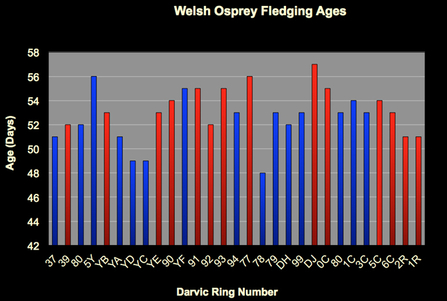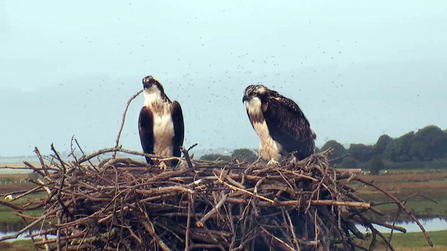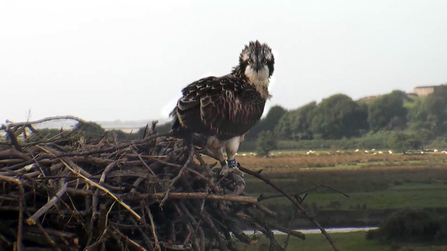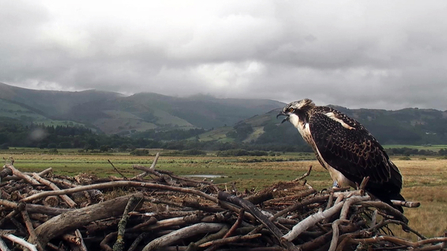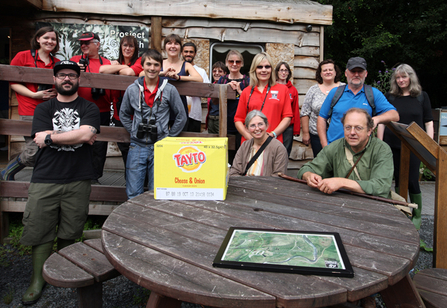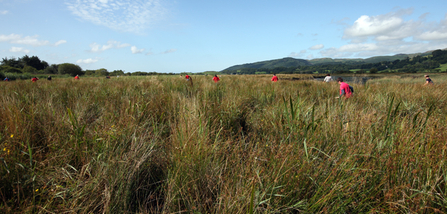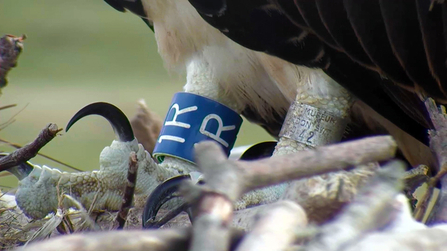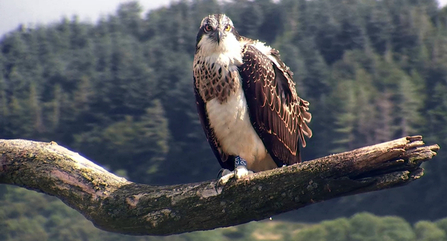Both sisters have fledged this week. Clarach (2R) flew for the first time last Sunday, August 18th and Cerist (1R) went two days later. They were both 51 days old when they fledged, pretty young for ospreys, especially females.
Of all the ospreys that we know of and have data for in Wales, Clarach and Cerist are the youngest females to fledge. In fact, they went earlier than most male ospreys who, on average, fledge a day or two earlier.
Clarach and Cerist (extreme right). Females in red and males in blue.

